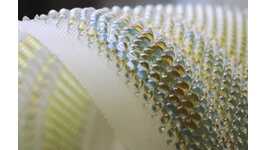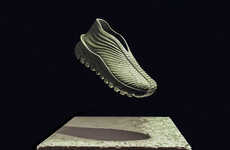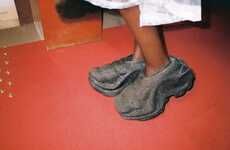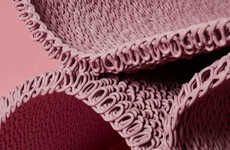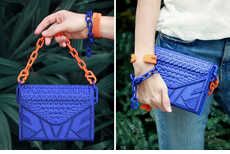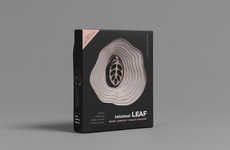
This 3D-Printed Clothing Piece is a Ready-to-Wear Garment
Laura McQuarrie — September 23, 2016 — Tech
References: free-d.net & 3dprint
There are many designers who are pushing the boundaries of 3D-printed clothing when it comes to creating sculptural garments and avant-garde designs, but Free-D aims to set itself apart by creating clothing using this technology that the average person could fit into their wardrobe. Free-D's 'AMIMONO' clothing line is described as "real clothing created with a 3D printer."
One piece from the AMIMONO collection is a vest that takes inspiration from the knotting techniques used in knitting, but instead used 3D modeling and printing to create a woven garment that is formed without any seams. To give the garment flexibility and movement, the designers favored the use of TPU, which is elastic like real cloth fabric.
As well as encouraging the average person to see 3D-printed clothing as fully wearable, this kind of manufacturing introduces plenty of possibilities for customization.
One piece from the AMIMONO collection is a vest that takes inspiration from the knotting techniques used in knitting, but instead used 3D modeling and printing to create a woven garment that is formed without any seams. To give the garment flexibility and movement, the designers favored the use of TPU, which is elastic like real cloth fabric.
As well as encouraging the average person to see 3D-printed clothing as fully wearable, this kind of manufacturing introduces plenty of possibilities for customization.
Trend Themes
1. Wearable 3D Printing - The trend of 3D printing wearable clothing presents an opportunity to create bespoke garments that are seamlessly personalized to a consumer's body shape and taste.
2. Flexible Materials in Additive Manufacturing - Utilizing elastic materials like TPU opens up opportunities for innovation in flexible clothing materials that can adapt and move with the body's motion.
3. Accessible Fashion Technology - Making 3D printed clothing wearable in everyday life could democratize fashion and bridge the gap between high-end avant-garde fashion and everyday fashion.
Industry Implications
1. Fashion - The fashion industry can utilize 3D printing technology to create on-demand garments that are personalized for each shopper, with designs that integrate technological innovation with traditional fashion aesthetics.
2. Additive Manufacturing - The 3D printing industry has opportunities to collaborate with fashion designers to develop new textiles and materials that can be used to create fully functional 3D printed clothing that incorporates both aesthetics and functionality.
3. Customized Clothing - The trend of 3D printed clothing introduces a new frontier of customized clothing options that could create new revenue streams for fashion brands and companies that leverage this technology for mass production and curating a unique wardrobe for each shopper.
3.9
Score
Popularity
Activity
Freshness


